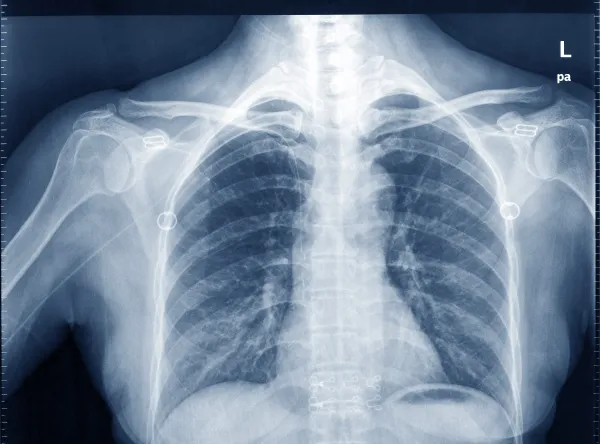Performing Vent Management? Heed These Tips to Avoid Auditor Scrutiny
Hint: Make sure medical necessity, bundling issues are handled. If you were submitting more than half of your claims with errors on them, you'd eventually notice, right? That seems to be how CMS feels about ventilator claims, since a recent audit found that the improper payment rate for ventilators was 57.4 percent. That's the word from the April 2018 Medicare Quarterly Provider Compliance Newsletter, which pinpoints ventilator claims as being particularly error-prone. In particular, medical necessity accounted for the majority of errors, and missing documentation was also an issue. Pulmonologists are involved with ventilator claims in several areas. They can write orders for ventilators used at home when patients have conditions such as chronic respiratory failure with COPD, and they also handle ventilation management for patients in respiratory failure. In the latter case, to ensure that you don't face denials, follow these tips for ventilator management claims. Keep An Eye on Method You can avoid denials for your pulmonologist's respiratory failure treatments if you pay attention to your physician's method of ventilation management, the date of care, and whether Medicare bundles E/M codes into the services. By understanding three essential points, you're sure to choose the right ventilation management code every time. 1. Choose a Management Code Based on Location, Time Spent When your physician uses ventilation management to treat respiratory failure, you should choose from the following codes: Tip: You should know the location of where the vent management was performed, as well as how much time was spent on it, to select the appropriate code. Ensure Documentation Fits the Bill In terms of documentation, the physician should record the ventilator settings and adjustments. This includes the initial or current vent settings, any changes to those, and recommendations and/or orders relating to the vent setting changes. Once you know how your pulmonologist administered the ventilation, look at when he administered the treatment. Choose the correct code based on whether you're reporting the first day of ventilation or subsequent days. Example: A patient has respiratory failure superimposed on congestive heart failure. Another physician calls your pulmonologist into the coronary intensive care unit to set up the patient, who has just been intubated, on a ventilator. The pulmonologist examines the patient, reviews the pertinent data including chest x-rays, and orders the ventilator settings. He then writes a note describing what he's done, documenting all the ventilator settings and how to monitor the patient including measuring arterial blood gases. You should report 94002 for the first day of the ventilation and 94003 for subsequent days. Link the code to J96.00 (Acute respiratory failure, unspecified whether with hypoxia or hypercapnia) for the acute respiratory failure and I50.9 (Heart failure, unspecified) for the congestive heart failure, unless documentation supports more specific codes. Remember this: If the pulmonologist initiates only continuous positive airway pressure (CPAP) on an intubated patient, you should select 94660 (Continuous positive airway pressure ventilation (CPAP), initiation and management). But if the physician initiates negative pressure ventilation, you should use 94662 (Continuous negative pressure ventilation (CNP), initiation and management). The most frequent use for 94660 is in the outpatient setting for the patient with sleep apnea on whom the pulmonologist initiates nasal CPAP to use during sleep. 2. Support Your Coding With Proper Diagnoses Linking the right ICD-10 code to your ventilator procedure code can be tricky because your pulmonologist's terminology may not clearly indicate the exact diagnosis. Dig into the details of the documentation to figure out which code is best. You'll look to the J96.xx series when your patient is diagnosed with respiratory failure, but you'll need to know a few details before you select the right code. Sometimes pulmonologists use the term "respiratory failure" as a general phrase when a patient has difficulty breathing. Your challenge is figuring out whether the physician intended for you to report a code for acute or chronic respiratory failure. Best bet: The situation is even more confusing when the patient has chronic respiratory failure with an acute episode. It is likely that patients who are being hospitalized for their respiratory failure are experiencing some form of acuity. The key to using the right diagnosis code for respiratory failure is deciphering from your pulmonologist's documentation how quickly the patient normalizes his lung function between episodes of the respiratory disease. Example: Your pulmonologist treats a patient with end-stage emphysema who has consistently altered carbon dioxide and oxygen levels. The physician diagnoses the oxygen-dependent patient with chronic respiratory failure. The patient presents in the emergency department for an exacerbation of emphysema, which severely deteriorates the patient's already compromised condition, causing acute respiratory failure. In this case, you would report J96.20 (Acute and chronic respiratory failure, unspecified whether with hypoxia or hypercapnia) for acute on chronic respiratory failure. The documentation on an arterial blood gas determination of an elevated PaCO2, elevated bicarbonate level, and a low pH help to substantiate the diagnosis of acute on chronic respiratory failure. 3. Choose Between E/M and Vent Management If your pulmonologist performs ventilator management and an E/M, you'll have to look at the documentation to see which you should report. Because of National Correct Coding Initiative edits, you can never bill ventilator management with an E/M code, such as 99221 (Initial hospital care...) or 99291 (Critical care ...). The bottom line: Base your coding on the level of assessment and decision-making your pulmonologist documents. Choose either the E/M or the ventilation management depending on the medical record. If your pulmonologist's service focuses on vent management, and he did not document all of the necessary elements in the key components warranting an E/M service, you should report a vent management code. If, however, your physician performs and documents the necessary items of the key components, expanding beyond issues merely related to the ventilation, select an E/M code. Beware: Ventilation management and critical care coding often go hand-in-hand. You can't separately report both a critical care code and a ventilation management code, however. Remember: Subsequent-day ventilation management pays less than subsequent hospital care (levels 2 and 3). It is up to you and your pulmonologist which code you report, but the documentation must support the selected code and the medical necessity of the service.




